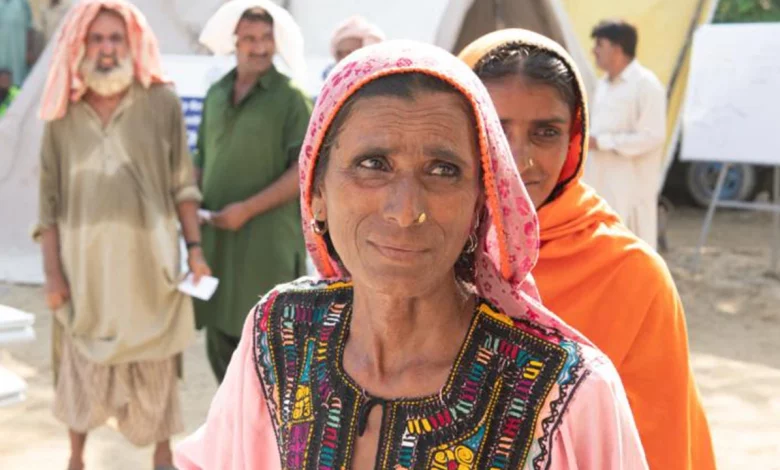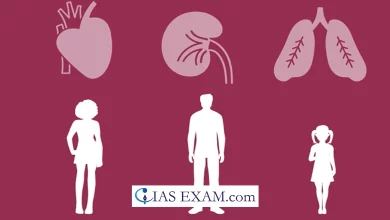Daily Current Affairs for UPSC
Global Report on Internal Displacement 2023
Syllabus- Disaster Management [GS Paper-3]

Context- Recently, the Internal Displacement Monitoring Centre has released a report i.e. The Global Report on Internal Displacement 2023 (GRID-2023), which cites that the number of people displaced by disasters rose by 40% in 2022 rather than 2021.
Key Highlights of the report
-
- Total Number of People Displaced:
- In 110 countries and territories, the number of people experiencing internal displacement reached a record high of 71.1 million.
- 8.7 million as a result of natural disasters and 62.5 million as a result of conflict and violence.
- As of December 2022, disasters had internally displaced 8.7 million people in 88 countries and territories.
- Pakistan, Nigeria, and Brazil, among other nations, experienced flood displacement at all-time high levels as a result.
- Disasters caused 30.7 million new displacements by 2021. 150 countries and territories reported such displacement in 2022.
- Total Number of People Displaced:
- Country wise Picture:
-
-
- In 2022, Pakistan recorded the highest number of disaster-related displacements worldwide, with 8.16 million.
- Millions of people were displaced in Pakistan by floods, which accounted for a quarter of all disaster displacements worldwide.
- With 5.44 million reported displacements, the Philippines ranked second, and China came in third with 3.63 million.
- Nigeria came in fifth place with 2.4 million displaced people, and India came in fourth with 2.5 million.
-
- Reasons for Relocation:
- Disaster: The effects of La Nia, which lasted for the third year in a row, are largely to blame for the rise in disasters, particularly weather-related ones.
- Worldwide disasters were widespread as a result of the “triple-dip” La Nia.
- Displacement caused by Russia and Ukraine: The war between Russia and Ukraine resulted in an increase in the number of people displaced in 2022.
- 16.9 million people were displaced as a result of the conflict, which was “the highest figure ever recorded for any country.”
- The quantity of relocations related with struggle and brutality almost multiplied to 28.3 million.
- Implications:
- Dug in struggle, fiascos and relocation exasperated Worldwide Food Security in 2022, which was at that point a worry because of the sluggish and lopsided recuperation from the Coronavirus pandemic.
- Due in part to their dependence on imports of food, fertilizer, and international humanitarian assistance, low-income nations, many of which are dealing with internal displacement, were the most affected.
- IDPs are present in 75% of the nations rated as experiencing crisis levels of food security.
What is the Situation of India?
- In 2022, India recorded a thousand cases of internal displacement, 631,000 cases of conflict and violence, and 2.5 million cases of natural disaster.
- Before the official start of the monsoon season, which typically lasts from mid-July to September, flooding began in India and Bangladesh.
- Yet again india’s north-eastern territory of Assam was impacted by early floods in May 2022 and similar regions were overwhelmed in June. Statewide, nearly five million people were affected.
- India’s July 2022 rainfall was some regions’ lowest in 122 years.
- India had recorded 2.1 million displaced people by the monsoon’s end, a significant decrease from the five million in the 2021 season.
What is Internal Displacement?
- About: Inward uprooting depicts what is happening of individuals who have been driven away from their homes however have not left their country.
- Displacement Factors: A great many individuals are evacuated from their homes or places of routine home every year with regards to struggle, brutality, improvement undertakings, debacles and environmental change and remain uprooted inside their nations’ boundaries.
- Components: There are two components that make up internal displacement:
- To differentiate them from economic and other voluntary migrants, the person’s movement is coerced or involuntary;
- The individual stays inside globally perceived state borders (to recognize them from displaced people).
- Distinction from Refugees: A person who has been persecuted and forced to leave his home country is a “refugee,” as defined by the 1951 Refugee Convention.
- A precondition of being viewed as an outcast is that an individual crosses a worldwide boundary.
- Internally displaced individuals, in contrast to refugees, are not covered by any international treaty.
- At the worldwide level, no single organization or association has been assigned as the worldwide lead on security and help of inside uprooted people.
- Notwithstanding, there are Joined Countries Core values on Inside Relocation.
What suggestions are made?
- Compromise, peacebuilding, fiasco risk decrease, environment versatility, food security and destitution decrease should be generally fortified.
- In order to deal with the scope of the problems that displaced people face, there is an increasing demand for long-term solutions. This includes the expansion of cash assistance and livelihood programs that increase IDPs’ (Internally Displaced People) economic security by investing in risk reduction measures that improve the resilience of their communities.
- Investments in anticipatory action and risk reduction measures that enhance the resilience of displaced communities are required in addition to immediate humanitarian assistance.
- By simultaneously improving their food security and the self-sufficiency of their communities and nations, developing IDPs’ livelihoods and skills would facilitate long-term solutions.





.png)



